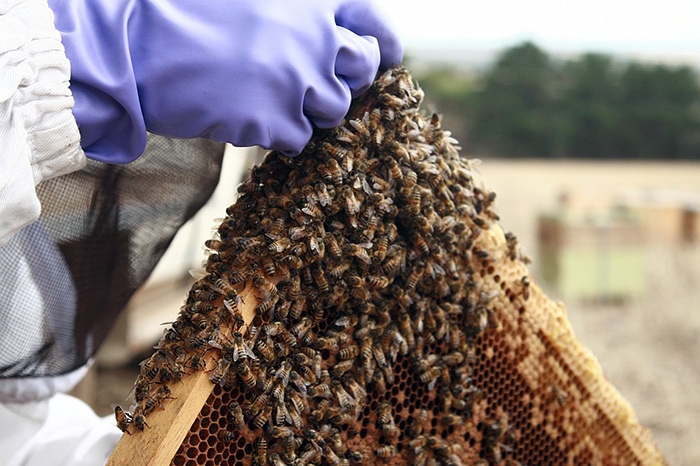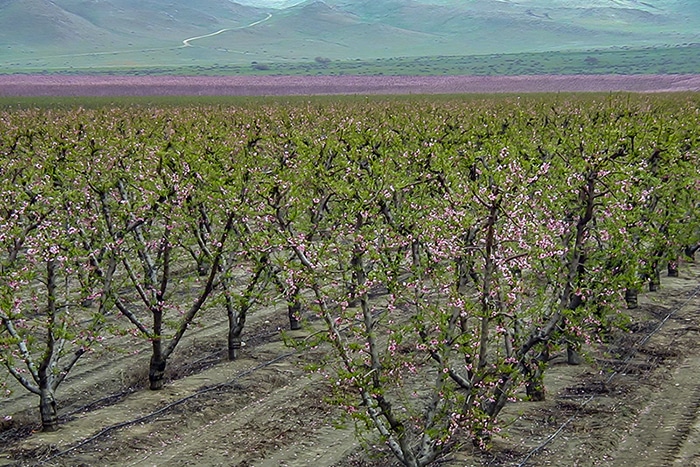HONEY BEES? IT'S OUR NATIVE BEES THAT NEED THE BUZZ
Many years ago, someone recommended that I plant clustered mountain-mint, Pycnanthemum muticum, the native perennial gardeners refer to as “THE pollinator magnet.” I did and I was soon reveling in an insane abundance of flower visitors. Each summer thereafter I anticipated the great influx of fascinating insects: everything from nifty-looking wasps to stunning buckeye butterflies.
Of course I also observed honey bees, the most beloved of the bees. I had been pleased back then to see them frantically mobbing my flowers; they’re essential pollinators, after all. But I’ve learned a lot since my wildlife-sustaining journey began and the honey bee joy is gone. In fact, I’m really dismayed to see so many of them in my nook of suburbia.
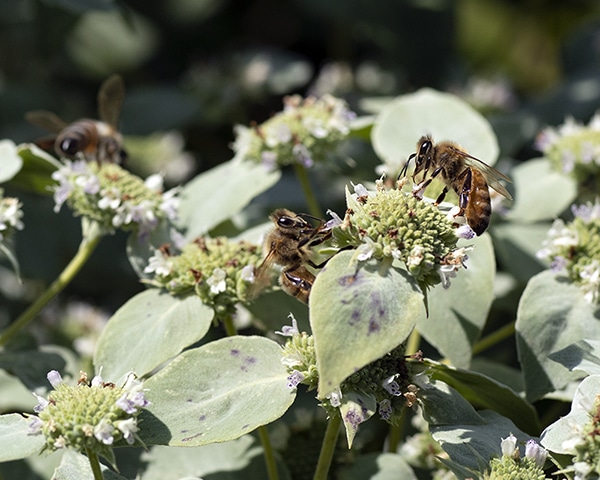
The honey bee hubbub
Honey bees are not a native species, a fact that many people aren’t aware of. Originally from Europe and Africa, “they were introduced to the United States in the 1600s likely for candle wax, and potentially for sugar and mead,” said Rich Hatfield, a senior conservation biologist for the Xerces Society, in a recent webinar.
And they’ve taken on an essential role in contemporary farming since they were brought here by the colonists. It’s been predicted that today’s giant agricultural systems would fail if honey bees couldn’t be rented for their pollination services. Carted across the country and released by commercial beekeepers, honey bees buzz about monoculture croplands and pollinate our favorite consumables like peaches and almonds.
Undoubtedly invaluable insects and dutiful pollinators of our introduced crops, honey bees and their plight have made headlines for years now. Although not entirely clear, the issues associated with their losses point toward a perfect storm of stressors: man-made diet, monoculture foraging, lack of wildflower diversity, chemical exposure (such as insecticides, fungicides and miticides), viruses, parasites, poor management practices and a changing climate.
But there appears to be misinformation surrounding the prevailing honey-bees-need-our-help chatter. Are honey bees in trouble? You bet they are. Are they threatened with extinction? Most researchers agree that no, they’re not.
All the hubbub regarding honey bees is not a matter of pollinator conservation, but of economics. The mortality of a bee hive is higher than it used to be and that forces commercial beekeepers to purchase new queens or split their colonies. “Time is money so the issues right now for honey bees is not about a lack of honey bees—you can get as many honey bees as you want—it’s about cost,” said Sam Droege, a wildlife biologist with the Patuxent Wildlife Research Center of the U.S. Geological Survey at one of his many talks I’ve attended. “It’s a more and more expensive system, [with] fewer and fewer commercial people.”
Before honey bees there were…
Other animals pollinated plants long before the settlers brought the honey bee to North America. Native bees, wasps, flies, moths, beetles, ants, butterflies, bats and hummingbirds are some of those great pollinators.
Tim McCoy, a research specialist in entomology at Virginia Tech, considers our native bees to be the real workers of the pollinator universe. “There are many crops that native bees do a lot better job of pollinating than honey bees do,” he said at a Virginia Master Naturalist lecture. Honeybees are not able to pollinate tomato and eggplant flowers, for example, and do a less than stellar job with peppers, melons, pumpkins, cherries, blueberries, watermelon and cranberries. Our native bees are all doing valuable pollination work but they receive very little attention, said McCoy. “All the attention goes to the charismatic honey bee.”
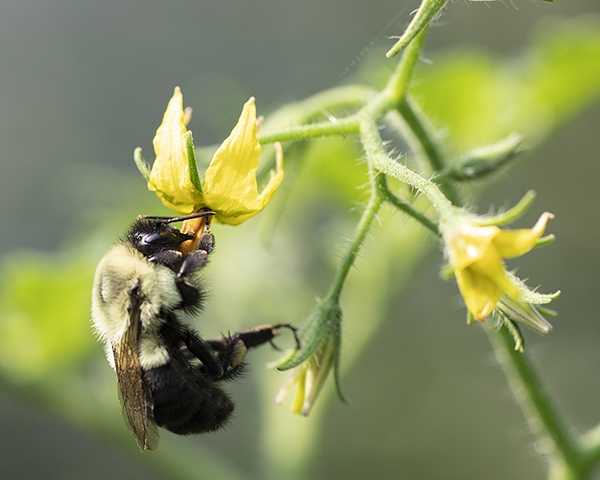
It’s estimated that the approximately 4000 species of native bees in the United States are providing more than half of the pollination services already offered by honeybees. That means if honey bees add $20 billion in yield to crops, our native bees are adding more than $10 billion. And all for free. Talk about the bee’s knees.
Our wild bees are arguably vital to agriculture—increasingly so with continuing honey bee woes—but their fundamental role is maintaining the ecological health of our natural areas.
Does suburbia need honey bees?
Let’s get back to why I’m so perturbed at the sight of all those honey bees. Consider that an average honey bee hive consists of 50,000 bees. My hobbyist beekeeper neighbor maintains two hives. That equates to 100,000 bees flying around my neighborhood visiting flowers, taking the nectar, hoarding the pollen. “That’s resources that these native bees can’t utilize, so they can actually outcompete native bees,” said McCoy. Sam Droege, who researches bee habitat, succinctly reinforced that fact: “If you think that you are putting in hives because your garden needs honeybees for pollination or you’re somehow doing the world a favor, you’re not.”
The majority of our native bees are solitary ground nesters: single moms that build nurseries in loose soil. They can produce only a handful of offspring each year. The mom will dig a cell, add the nutritional ingredients of pollen and nectar, lay an egg, then seal off the nest. For some bees, it may take until the following year for the newly emerged adults to begin the whole reproductive process over again. In comparison, it takes just 24 days for a honey bee to grow from an egg to a flying adult.
And it’s not just about my tiny garden being overrun by domesticated bees. Rich Hatfield and the Xerces team have been collecting evidence that shows honey bee foraging can alter native plant and bee communities. That’s extremely bad news for our natural systems and for every critter that these areas support.
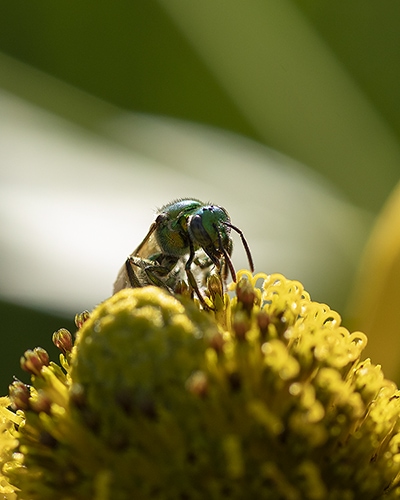
attracts a pretty metallic green sweat bee.
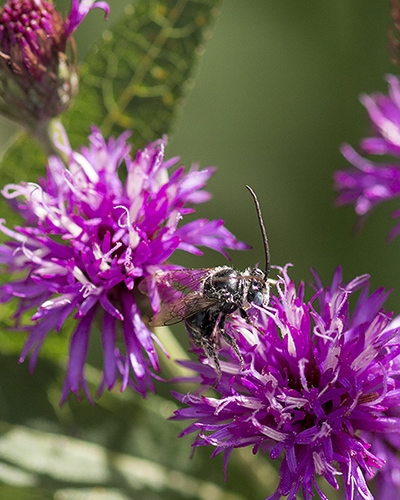
(Vernonia noveboracensis)
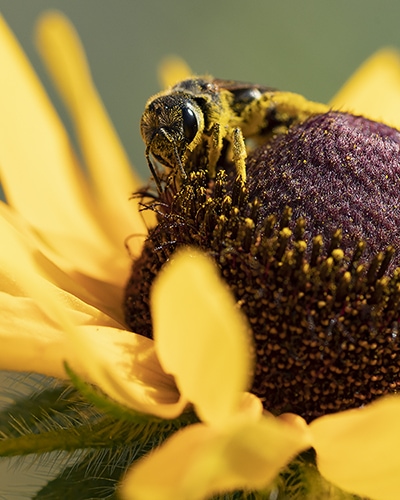
specialist bees.
Backyard beekeeping won’t save any bees
Wild bees in North America are, of course, facing other pressures besides the presence of the European honey bee. Introduced diseases, pesticide use, climate change and habitat loss from agricultural intensification and urbanization are all drivers of bee declines.
Which brings me to this pressing question: how many restaurants and brick-and-mortar retail shops do we really need?


Wherever you may live, it’s likely that land is being developed around you. I’m a few miles outside of Tysons Corner, a suburb of the Washington D.C. area, where less than a generation ago, farmland and woodland dominated. Today, all throughout the area, mirrored high rise buildings and ginormous land-consuming single family houses are sprouting up and sprawling out seemingly overnight, like mushrooms after a rain.
“So every square foot of pavement at one point was natural habitat, every one of our houses at one point was natural habitat, every lawn was natural habitat.” Sam Droege added, “You just know from land use changes that we’ve got issues here in terms of losses of biodiversity of all types.”
Rich Hatfield emphasized that the declines in our wild bees are parallel to, if not more severe than, what is being observed with the honey bees. “In some cases we are talking about extinction with our native bees.”
Give them what they need
At a lecture earlier this year, Doug Tallamy, author of “Bringing Nature Home” and the leading proponent of native plant gardening, relayed some sobering facts about our bees:
- 50% of Midwestern bee species have disappeared from their historic range just in the last century.
- More than 25% of the bumble bees indigenous to the United States and Canada are at risk of extinction.
- There are four species of bumble bees that have declined 96% in the last 20 years – meaning they’re functionally extinct.
- There are three species of bumble bees that are already extinct.
However, in his dire Anthropocene-inspired talk, Tallamy stressed that there were solutions. “Insects respond really, really quickly if you give them what they need.”

I've seen all kinds of amazing bees.
Droege, who takes phenomenal macro photographs of collected bee specimens at his bee lab in Maryland, said that in the wild areas that still have an abundance of flowering plant biodiversity, “there are lots of bees around.” And unlike larger animals that need a lot of space to live and forage, bees are so small that it’s easy to create habitat for them.
While backyard honey bee keeping won’t save any pollinators, backyard—and front-yard—gardening with locally native wildflowers, shrubs and trees could. It could also enhance habitat for the larger animals that live among us.
“Our bees are pollinating the native plants that feed a lot of our wildlife: everything from songbirds to grizzly bears,” Rich Hatfield explained. Wildlife diets consist of fruit, nuts, seeds, berries and roots—and most of the plants that produce those high-quality edibles are pollinated by native bees.
Plant diversity equals bee diversity
Of the 4000 bee species indigenous to the United States, approximately 500 are found in the Mid-Atlantic, with new species still being discovered. But alas, not much is known about the populations of these fascinating animals. “We’re really still at this beginning, discovery phase for all aspects of native bees,” Sam Droege admitted. The gaps in understanding, he explained, are primarily due to a lack of data and native bee taxonomists—and scarce research funding.
What is known about our bees is that most of them, like the honey bee, are foodie generalists that can go to different flower types. However, approximately 35% of our native bees are flower specialists, or more specifically, pollen specialists.
These specialist bees feed their babies pollen from just one, maybe two (and rarely three) plant species, plant genus or family groupings of plants. It comes down to 250 million years of co-evolution with our native plants, explained Droege. Because specialist bees raise their young on specific pollen, if there is no special pollen, there can be no specialist bees.
One of Sam Droege’s examples of a specialist relationship is the Salix or willow family of plants. Willows can be found in wetland systems and bloom very early in the spring; they support a set of specialist bees that will nest directly below them. “The bees come out [when] the willows are blooming, they grab the willow pollen and nectar and then they go back underground and nest again,” explained Droege. This is a cyclical relationship that can endure for years.
Undoubtedly, the biodiversity of native plants in an area determines the native bee community. Without those willows, the eight known species of bees that depend on them would disappear.
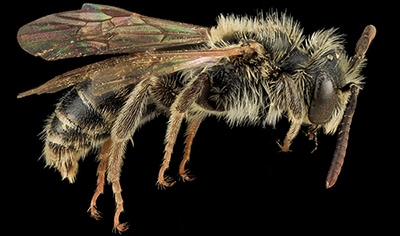
Willow specialist, Andrena nigrae. Photo courtesy USGS.

Fascinating Wild Bee Facts
Did you know?
- All life, including our own, wholly depends on wild pollinators because they pollinate nearly 90% of all native plants.
- Most of our native bees—which also include sweat bees, leaf-cutter bees, miner bees, mason bees, bumble bees and many others—require or prefer pollen from native plants to rear their young.
- All 40-plus North American bumble bee species are not-so-picky generalists that can gather pollen from an assortment of flowers.
- About 70% of our native bees nest in the ground. The other 30% are cavity nesters that create nests in dead wood, pithy or hollow stems, and even in stone and concrete cracks.
- One way to distinguish females from males is that females, on a good flower day, will have pollen covering their legs, bellies or head.
- Our wild bees are out flying and pollinating on cold or cloudy days, something honey bees aren’t inclined to do.
- Native bees are not aggressive. Male bees don’t have stingers and most species of females can’t sting. Also, our bees don’t defend flowers and some of the solitary bees don’t even defend their nests; the exception are the social bumblebees that will sometimes sting while defending their nests or if handled.
- When many insects exiting from a hole in the ground swarm, pursue and sting you, they are always yellowjackets—which are wasps, not bees.
Let’s Make More Bees
If you’ve been avoiding all news relating to the sixth mass extinction, the insect apocalypse, rapidly changing climate, ocean acidification, deforestation and plastic pollution, I can assure you the overall environmental outlook is bleak. Perhaps you feel overwhelmed or powerless to act? Fair enough. Unfortunately, the consequences of waiting around for someone else to solve humanity’s ecological problems will be devastating.
“Our only viable option is to live sustainably with the natural world that sustains us,” stated Doug Tallamy. “There is no other choice.” The parks and preserves are where biodiversity is huddling now, he continued, but those areas are too isolated and too small to keep our ecosystems running in the long term.

support specialist bees and many other flower visitors.
Because a massive 85.6% of land east of the Mississippi is privately owned, Tallamy advocates for conservation to be practiced on private property. Our properties.
“When we pick plants based on not just what they look like, but what they do, then landscaping equals ecosystem restoration.” Tallamy said choosing native plants is the future of gardening and proclaimed it “21st Century Landscaping!” Indeed, 20th century landscaping epitomized our love affair with vast lawns and introduced ornamental plants. “That hasn’t worked.”
Ornithologist Roy Dennis once said: “Land ownership is more than a privilege; it’s a responsibility.” Truer words were never spoken. With private land ownership comes the weighty obligation of supporting all life on earth. But it doesn’t have to be a chore.
EASY ACTION ITEMS
Even the smallest yard or balcony can support bees. It’s roughly estimated that the pollen from about five flowers can feed a baby bee. Just five flowers! Planting one native plant could be the beginning of a beautiful future.
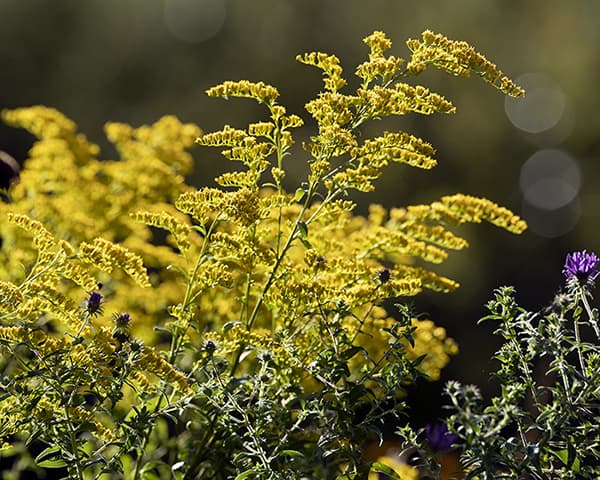
blooming goldenrods.
Plant asters and goldenrods.
In the Mid-Atlantic, Symphyotrichum and Solidago are two late-blooming genera that support the largest number of specialist bees: 67! What’s additionally amazing is that there are so many aster and goldenrod species to choose from. It’s no surprise that these wildflowers also host a high number of Lepidoptera (moth and butterfly) caterpillar species.
Note: Goldenrods shouldn’t be confused with the wind-pollinated ragweed that contributes to hay fever.
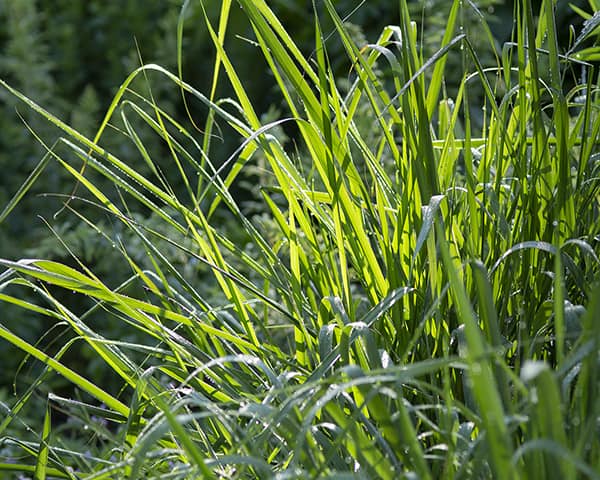
Remember the grasses.
Native bunch grasses like little bluestem (Schizachyrium scoparium), Indian grass (Sorghastrum nutans), switchgrass (Panicum virgatum) and purple lovegrass (Eragrostis spectabilis) can provide nesting sites and shelter for bumble bees. Grasses also add structure and interest to any garden.
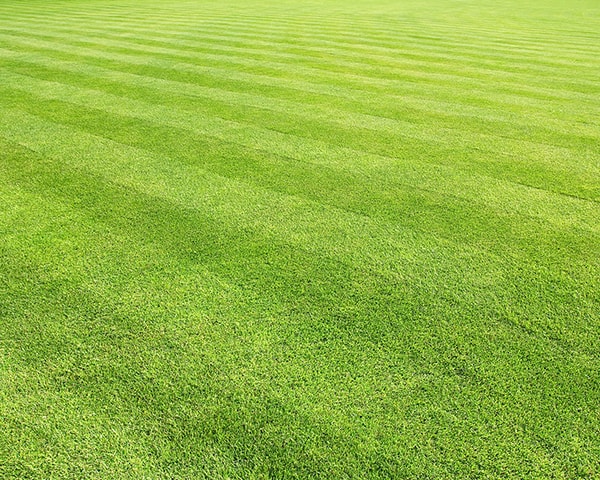
Reduce lawn.
Lawns are one of the ecological disasters of 20th century. Besides heavy chemical inputs, water usage and pollutant-spewing mowers, lawn does not support biodiversity. And there’s so much of it. In the United States, lawn is the crop with the most acreage—more than the amount covered by corn or soybean crops. Reversing acreages of lawn to natural spaces increases habitat for all creatures, great and small.

Remove invasive plants.
Invasive plants, like Callery (“Bradford”) pear, Japanese honeysuckle, English ivy and Japanese stiltgrass—just to name a few—were introduced from other countries and did not evolve with our local wildlife. They therefore do not support local food webs. Also, invasive plants out-complete our native plants for resources and can produce less nutritious nectar and pollen. Removing invasives from your property is as important as planting native plants. Not surprisingly, honey bees, which evolved elsewhere with some of the plants that are invasive here, have been shown to increase seed set in those invading plants.

A solitary momma bee nesting in the ground.
Photo by Jevaraars/CC.
Leave some dirt patches.
Most of our native bees are ground nesters that rely on some unplanted or un-mulched areas. Churn up well-drained soil to about three feet in an area that gets morning sun or is facing south—then wait to see who moves in.
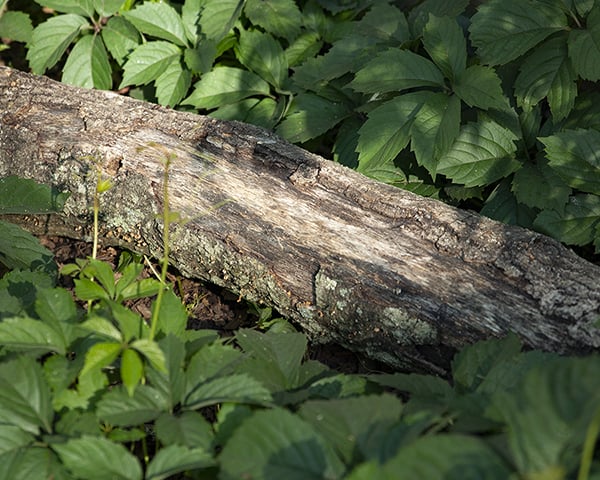
Keep dead wood and snags (dead trees) on your property.
It’s estimated that a third of native bee species use abandoned beetle tunnels as nesting sites to lay their eggs. Many other critters, birds included, also benefit from decomposing wood. Leave fallen branches and logs under trees or outline your naturalized beds with them. Trees are constantly being cut down in older neighborhoods—you could cart limbs into your garden to provide outstanding habitat.
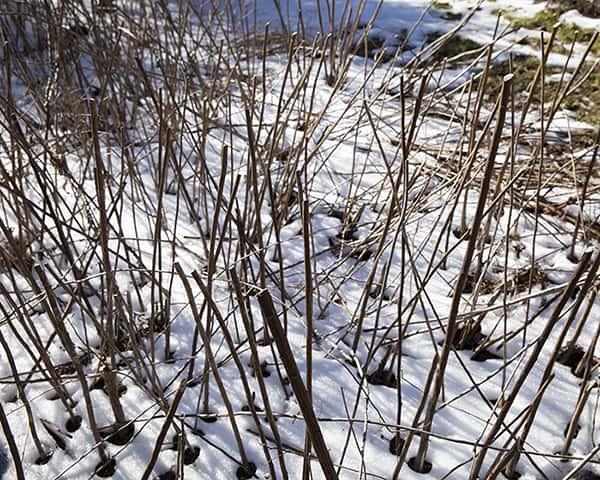
Retain perennial stems in your garden.
Some native bees and other arthropods will nest in dead hollow and pithy stems (such as goldenrods (Solidago spp.), Joe-pye-weeds (Eutrochium spp.), thistles (Cirsium spp.) and the beebalm/bergamots (Monarda spp.). Dead foliage standing through winter and up until spring can provide nesting sites and also offer ripened seedheads for birds and small mammals. It’s a full season process that works like this: SUMMER: Perennial plants grow. FALL/WINTER: Toward the end of the year the plants die back; leave stalks standing through spring. SPRING: Cut any still-standing stalks a variety of heights—from about a foot to two or three feet. Female bees begin to nest and lay eggs. SUMMER: While the new foliage grows up and around the cut stems, bee larvae develop. FALL/WINTER: Bees hibernate in the stalks. SPRING: Warm weather arrives and the now adult bees emerge. Yay! This cycle continues as cut stems are left in place year after year. See Xerces Society’s Save the Stems: How to Create Habitat for Stem-Nesting Bees.
Note: I’ve heard varied timing recommendations by local bee gurus, including cutting stems in late winter.

Eliminate pesticides.
Mosquito companies, for instance, use spray chemicals that will, if they kill mosquitoes, destroy all other insects that come into contact with the toxins. Mosquitoes also have been known to develop resistance to the very chemicals designed to kill them. Instead use simple—and ultimately more effective—methods for preventing mosquitoes, including enhancement of habitat for mosquito predators. Native plant gardens support beneficial arthropods such as dragonflies and spiders, and other mosquito consumers like bats and birds.
Winner Winner Pollen Dinner
When you’re thinking about what to plant in your area or region, favor the specialist bees first. You’ll be feeding not only the specialized 35% but also the generalist bees, other flower visitors and ultimately their predators, too.
Here are some of the specialist bee plant genera that are on Sam Droege and his team’s list of “Priority Plants.” I’ve paired them up with one of their specialist bee pollinators, photos courtesy the USGS Bee Inventory and Monitoring Lab, to spark a bit of curiosity while on your garden explorations. For a full list of bees and their flowers, visit Jarrod Fowler and Sam Droege’s Pollen Specialist Bees of the Eastern United States and Host Plants for Pollen Specialist Bees of the Eastern United States.

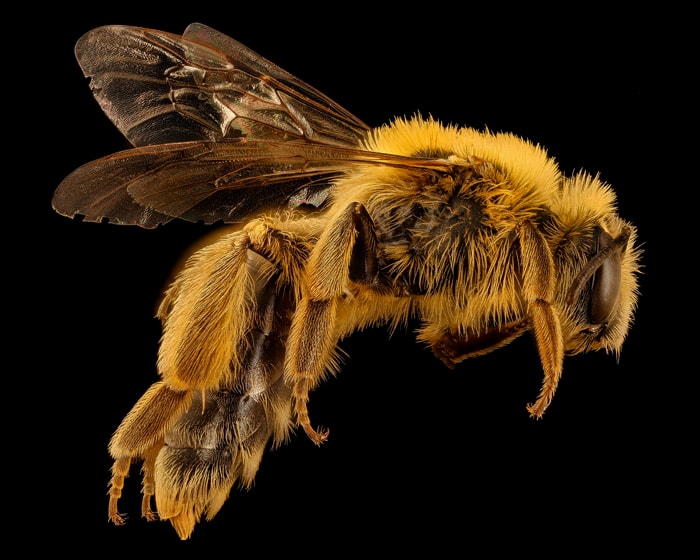
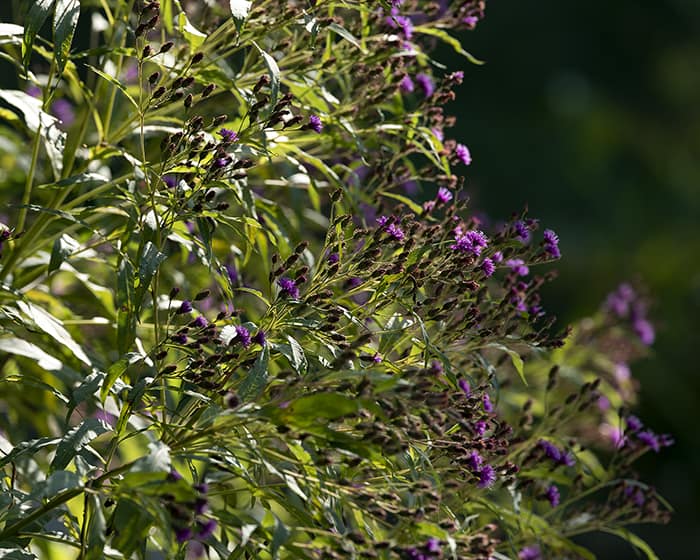
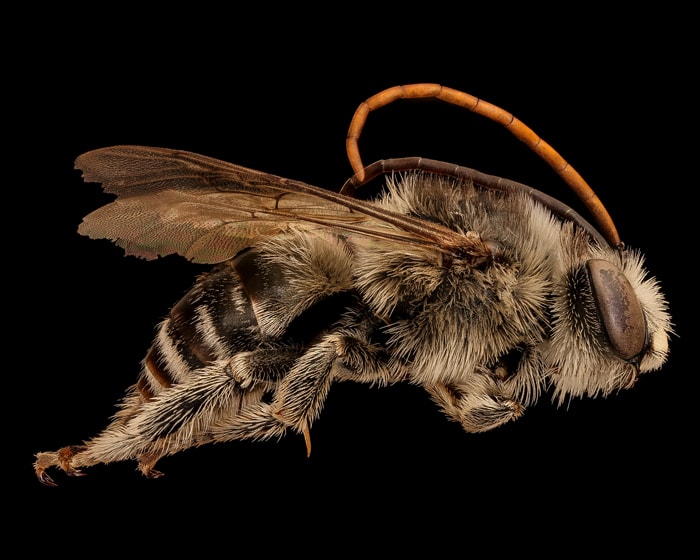

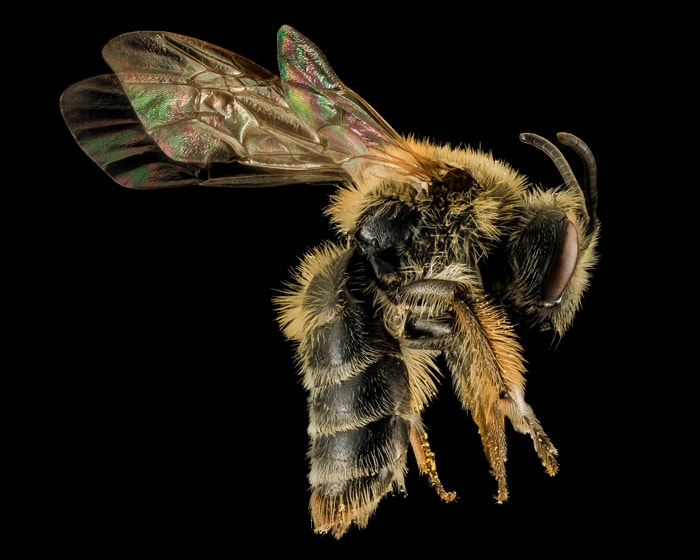

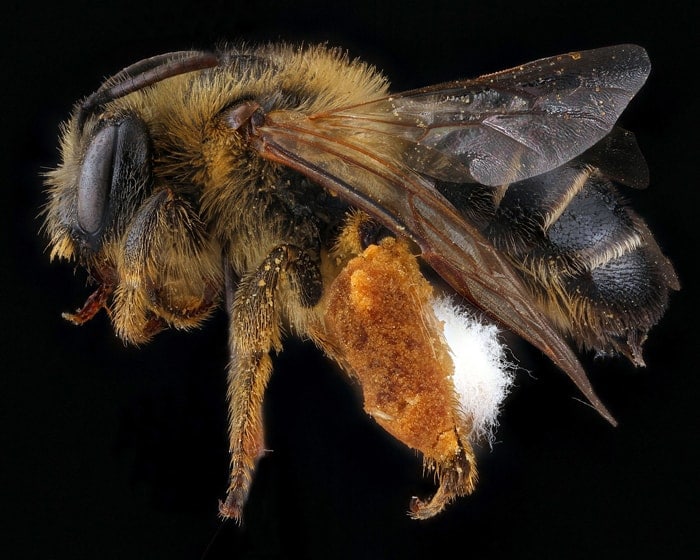

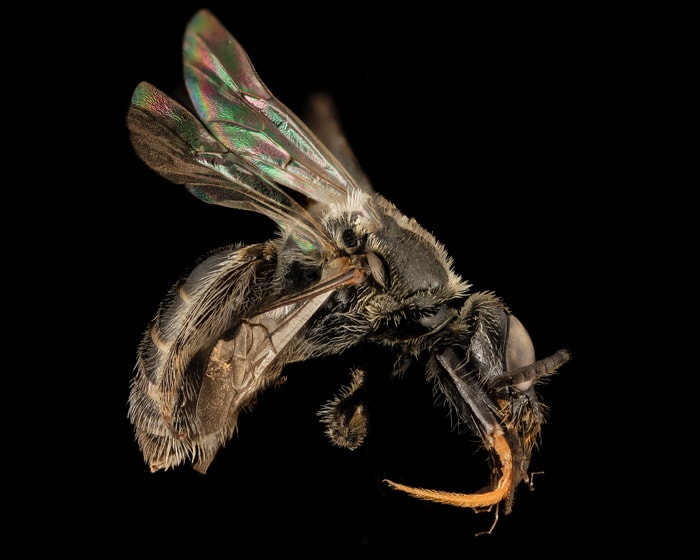
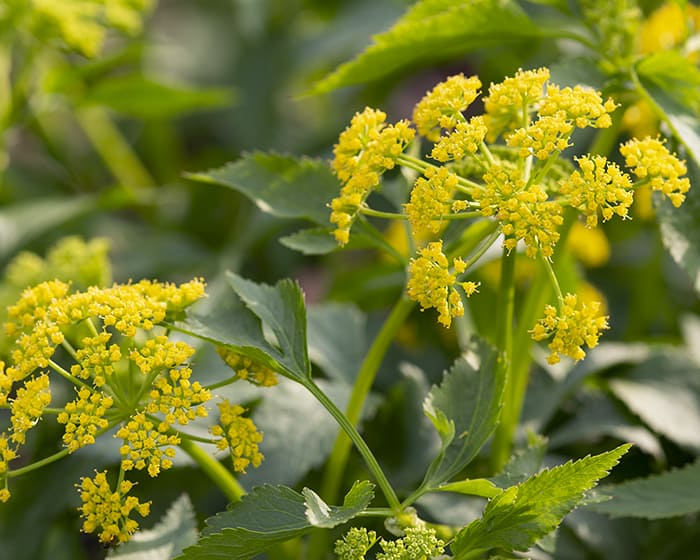




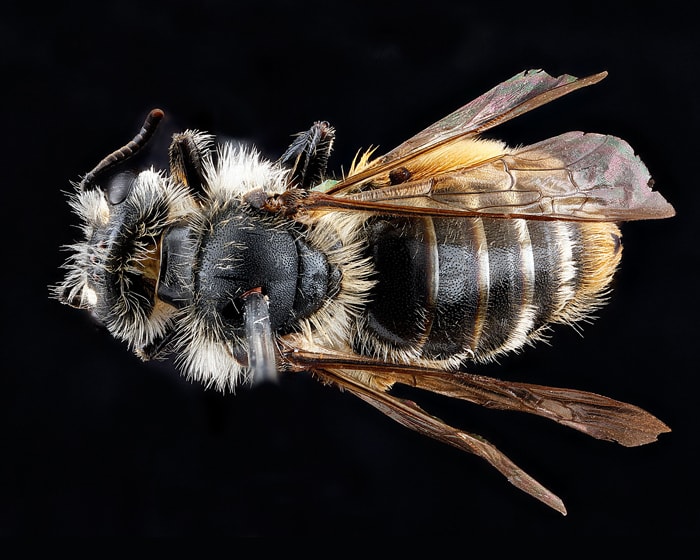
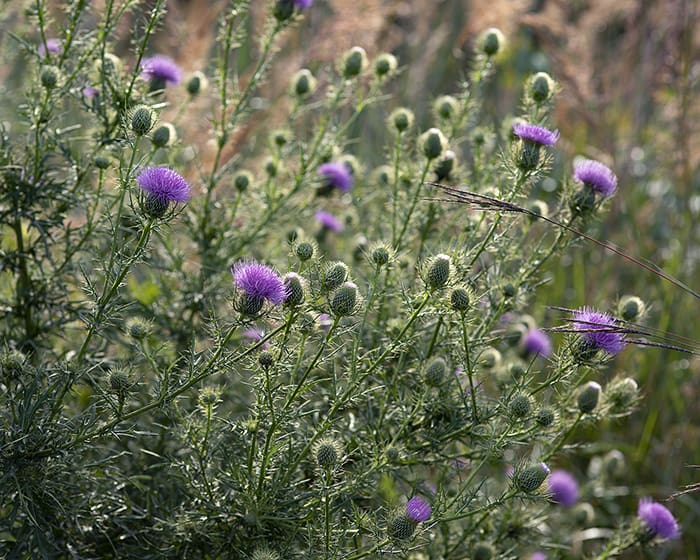
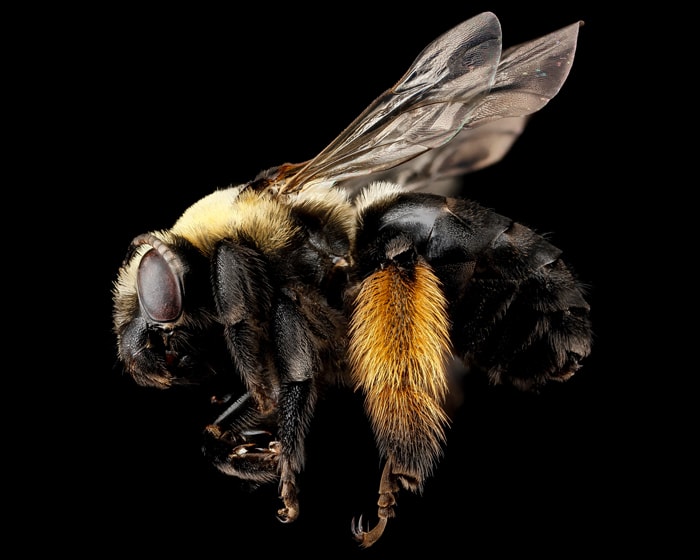
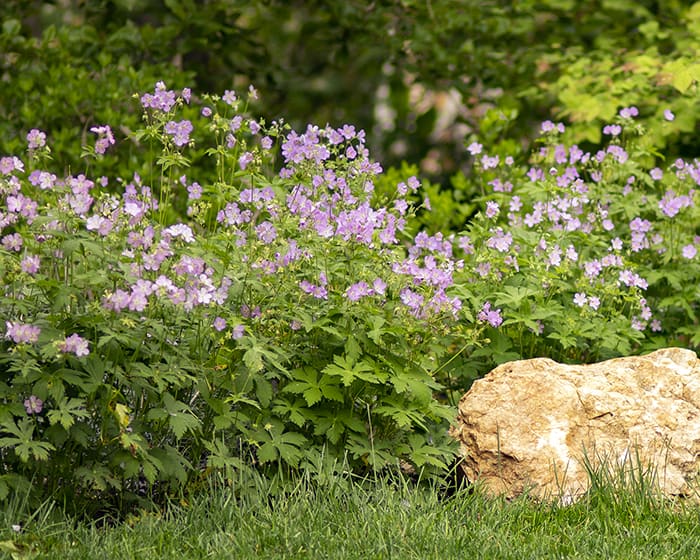
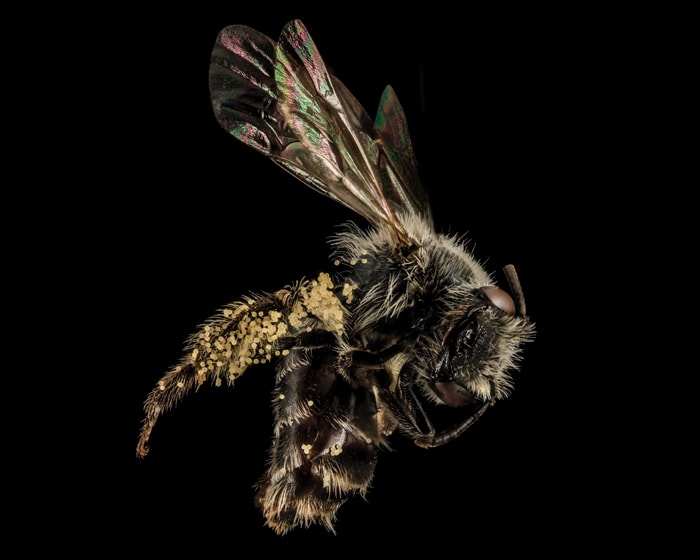
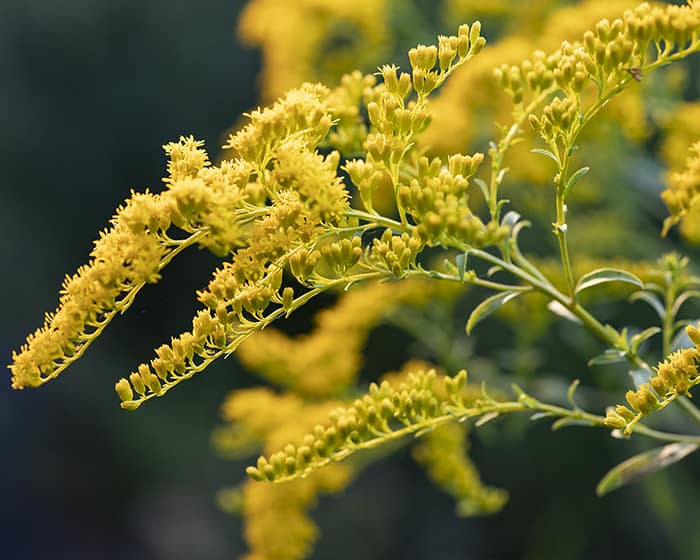



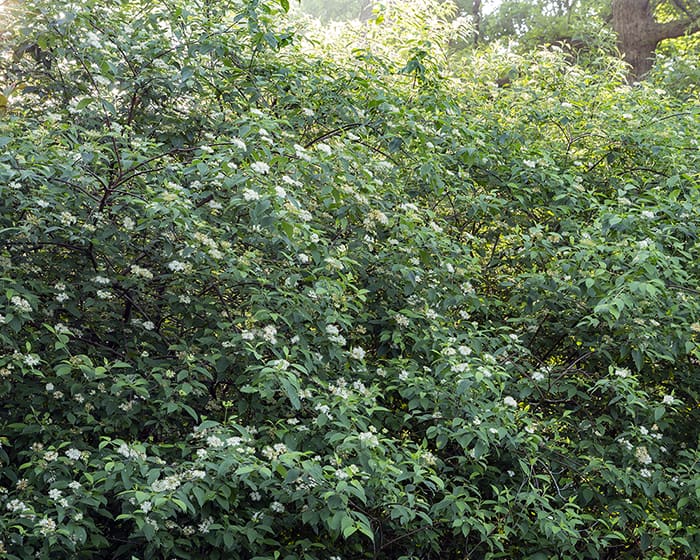
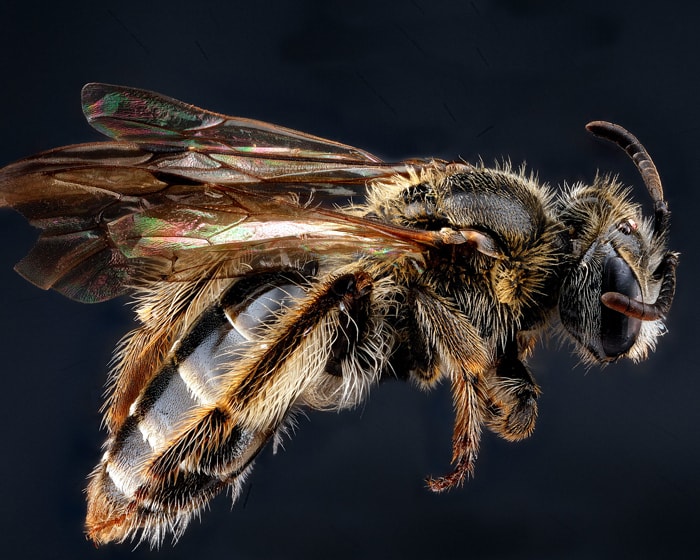
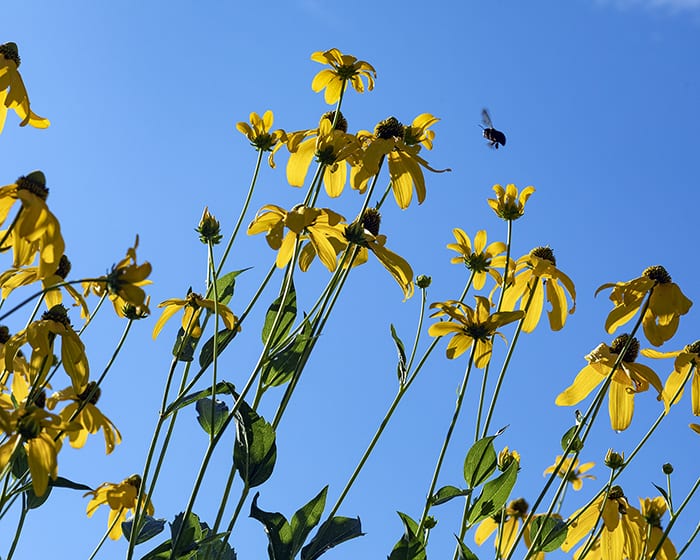
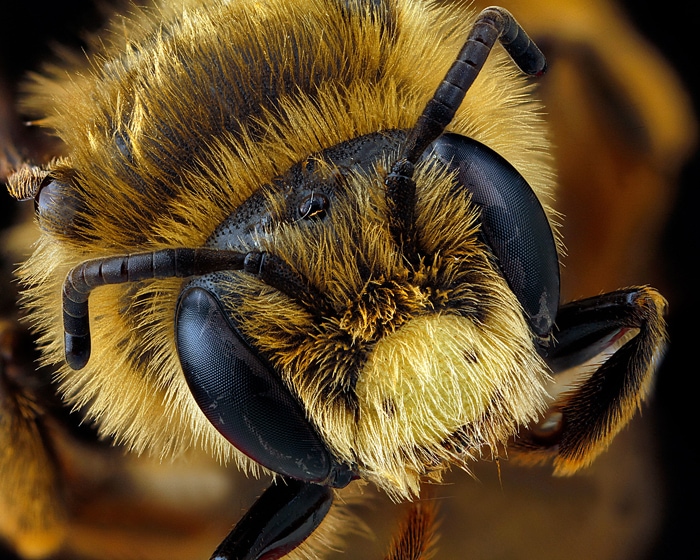
A few other priority plants:
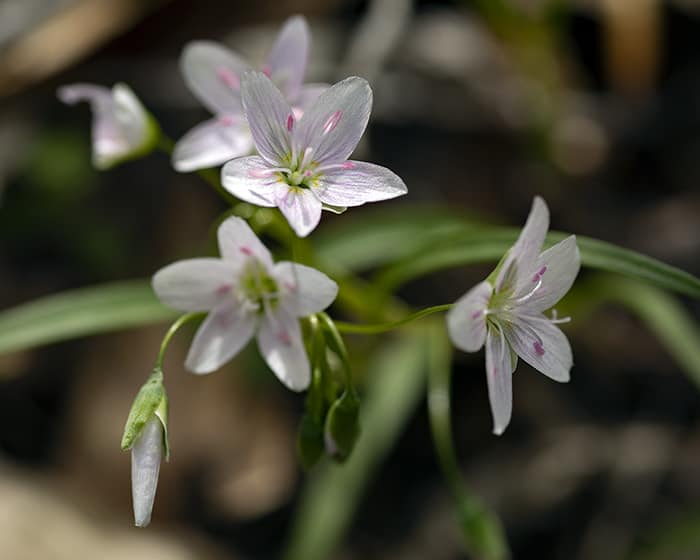
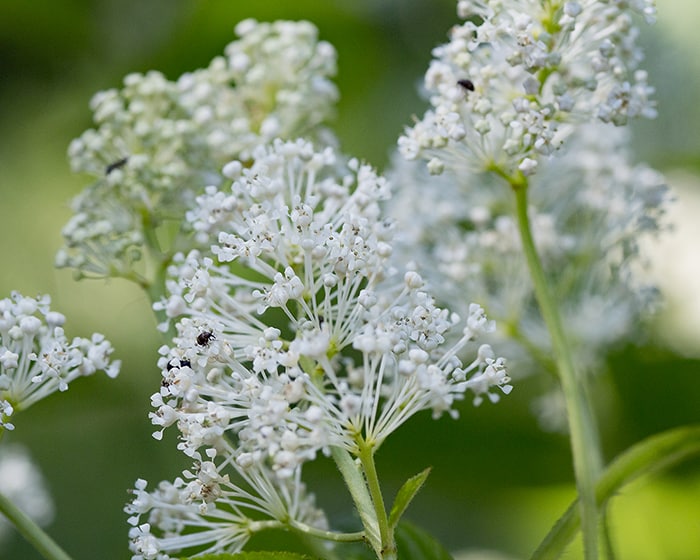
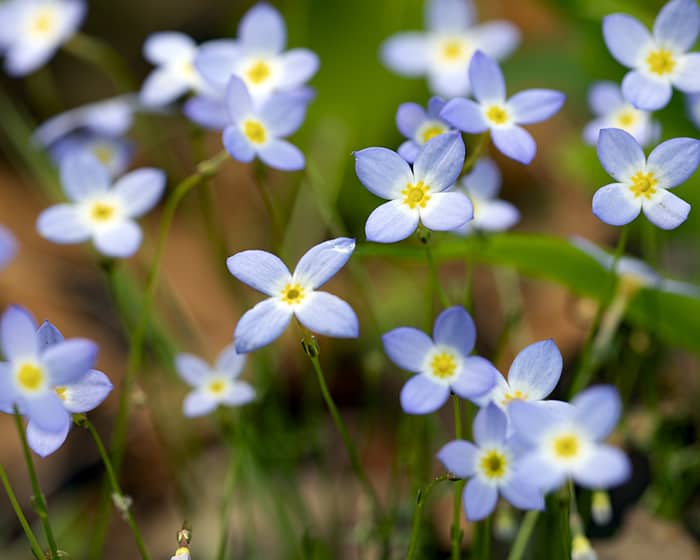
I hope you’ve been inspired to show our native bees some love. Over time you’ll want to offer them not only a variety of flower structures and colors—but also a continuous succession of blooms.
May your garden’s bees be ever wild and wonderful!
Additional Resources:
The Humane Gardener: How to Really Save the Bees
Wired: You’re Worrying About the Wrong Bees
Xerces Society: Bring Back the Pollinators: 5 Ways to Increase Nesting Habitat for Native Bees
Xerces Society: Bumble Bee Conservation: Protecting North America’s Disappearing Pollinators (Downloadable pdf)
Xerces Society: Nesting & Overwintering Habitat for Pollinators & Other Beneficial Insects (Downloadable pdf)
Xerces Society: Save the Stems: How to Create Habitat for Stem-Nesting Bees (Downloadable pdf)
USDA Forest Service & the Pollinator Partnership: Bee Basics: An Introduction to Our Native Bees
USDA Forest Service & the Pollinator Partnership: Guide to Bumble Bees of the Eastern United States
North American Native Bee Collaborative: Bees of Maryland: A Field Guide
USDA National Agroforestry Center: Enhancing Nest Sites for Native Bee Crop Pollinators
November 20, 2022: Updated with information from Xerces Society’s “Save the Stems: How to Create Habitat for Stem-Nesting Bees.”

